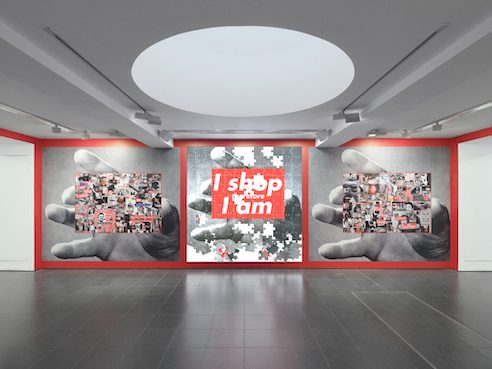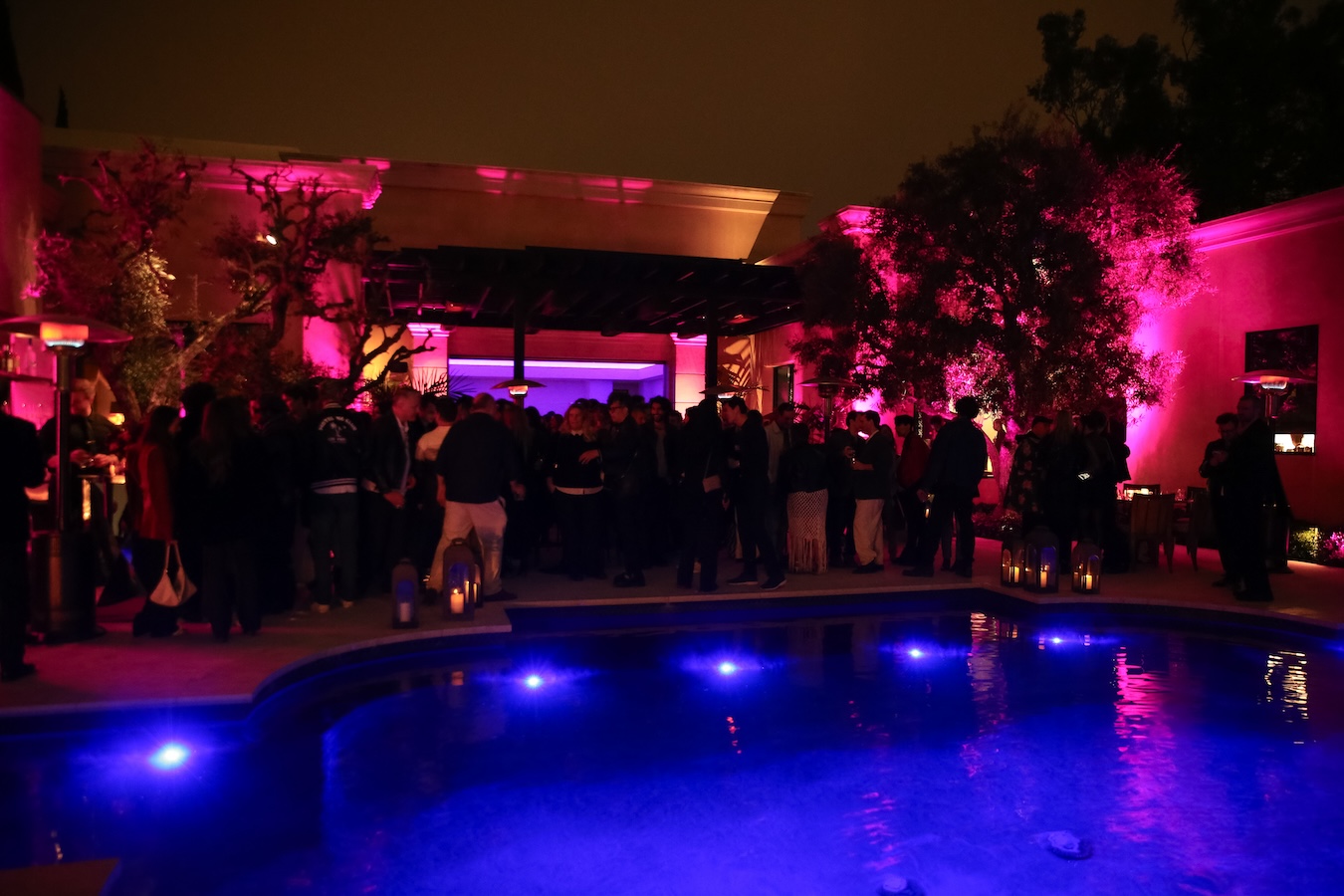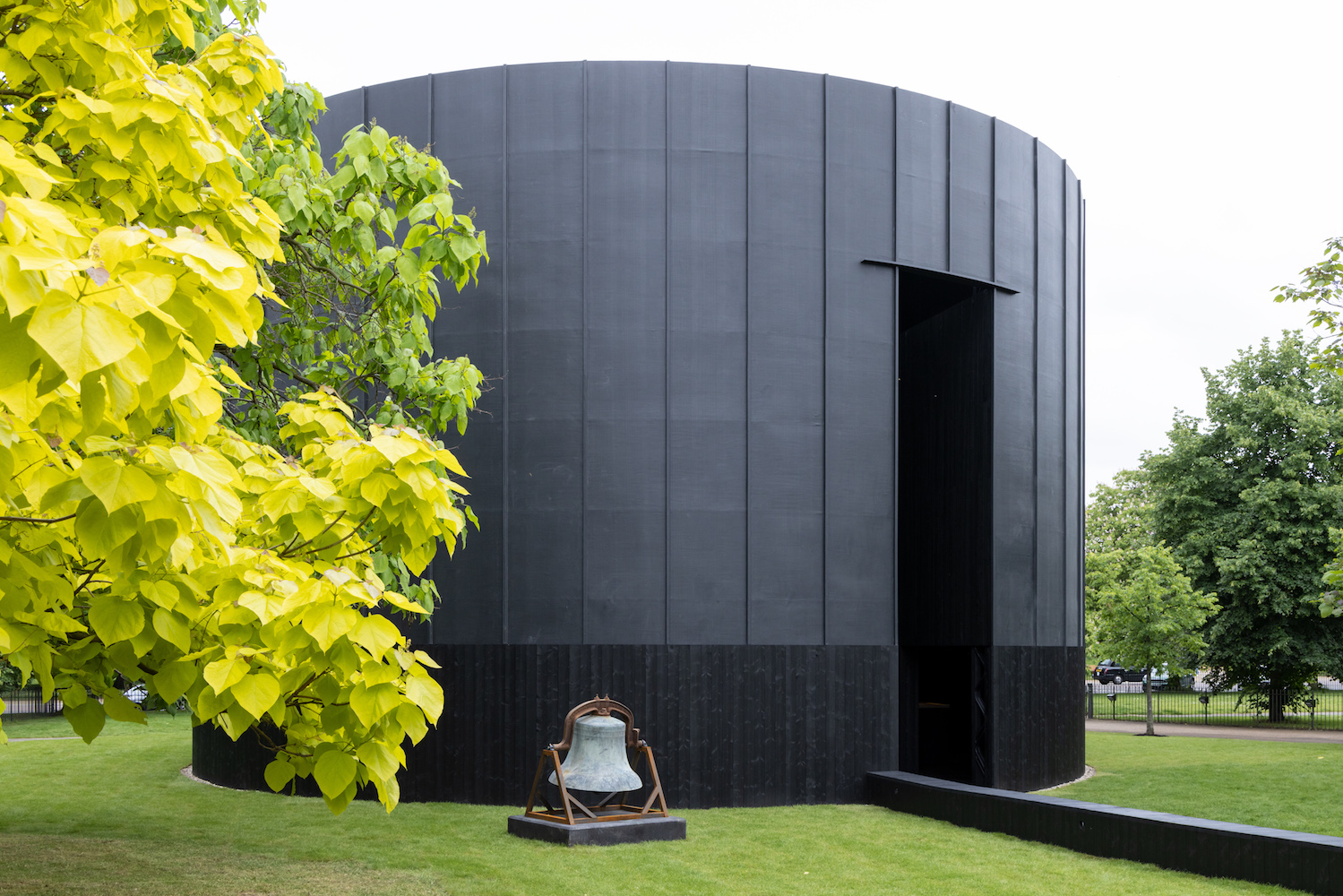The architect shares details on her sustainable practice
Standing in London’s Kensington Gardens this summer is À table, the 2023 Serpentine Pavilion designed by Lina Ghotmeh. Resembling a sunburst from above, fanning out in 360 degrees of joyous rays, the communal structure’s roof of wooden plates references the canopy of the surrounding tree-filled park. An open exterior and a warm interior filled with a series of tables and chairs laid out in a concentric manner. They beckon the public within, encouraging communion in spirit, sharing of meals, and connection through conversation. It calls to the public, “Come, grab a seat at our table.”
The Paris-based, Lebanese-born architect behind the major annual commission is known for her attention to place and history. Ghotmeh thinks about how to make bodies feel comfortable and at home within a space. She carefully chooses material, considering energy, carbon footprint, and environmental impact. Her approach of thorough research into the ecological and cultural history of a site naturally leads her to create ethical projects—both for people and for the land. Her work answers today’s questions by looking at yesterday’s experiences.
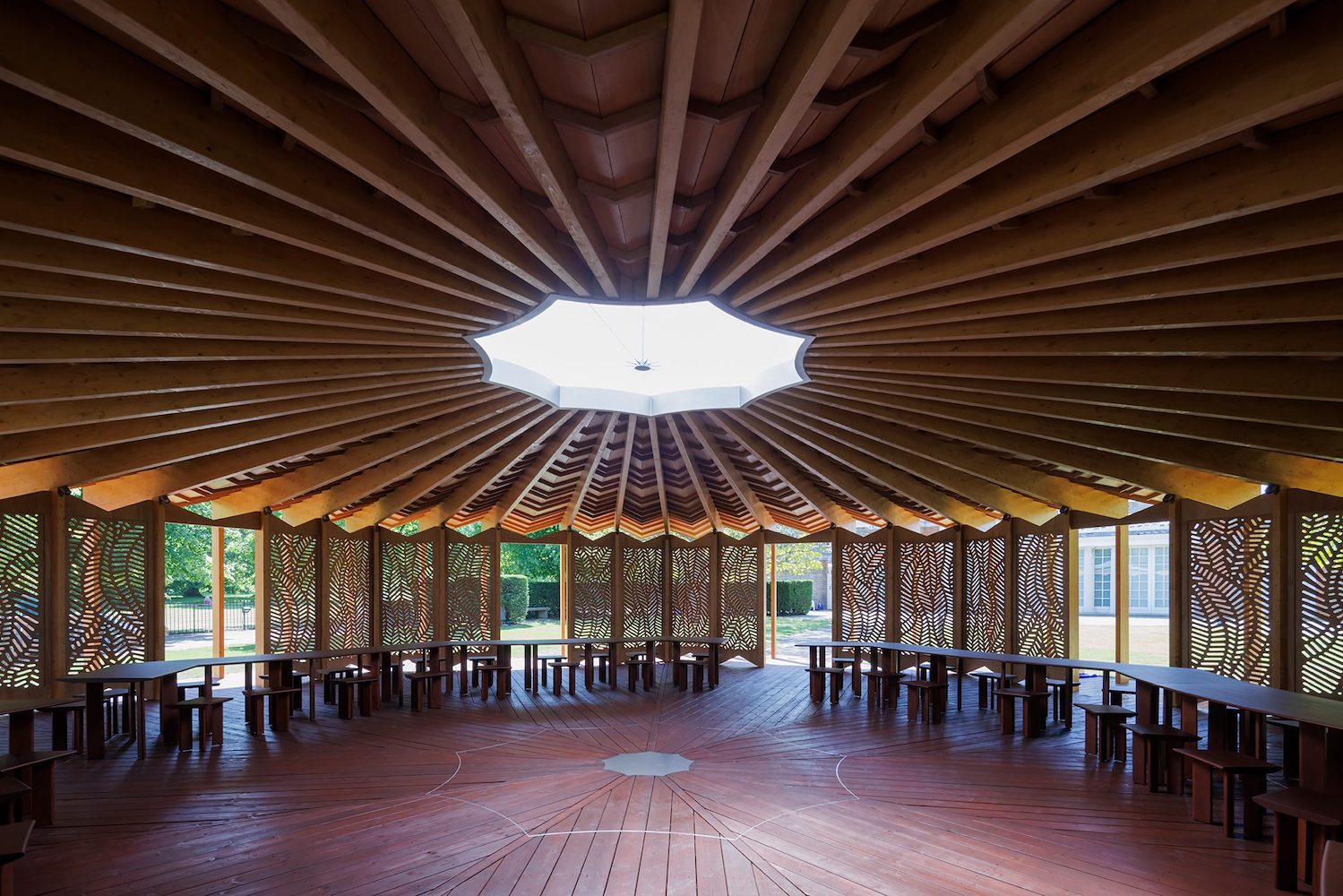
Serpentine Pavilion 2023 designed by Lina Ghotmeh. © Lina Ghotmeh — Architecture, photo by Iwan Baan, courtesy of Serpentine.
Ghotmeh’s residential and gallery space project Stone Garden in Beirut, a textured tower, its inhabitants looking out on a city through plant-framed windows. Its handmade facade alludes to memory and craft, providing a sense of resilience and life in its embrace of the way we live in urban environments—aware of what’s lost while hopeful about what remains. Her designs tell stories, as in the Sara Hildén Art Museum competition in Tampere, Finland. They aim at inclusivity, as in the National Choreographic Center of Tours in France. They strive for accessibility, as in Estonian National Museum in Tartu.
A week before delivering the first low-carbon, energy positive building in France, the Hermès Workshop in Normandy—its repeated arches in brick following the galloping horses of the maison’s equestrian heritage—Ghotmeh spoke with Whitewall from her studio in Paris about what goes into dreaming up architecture that cares.
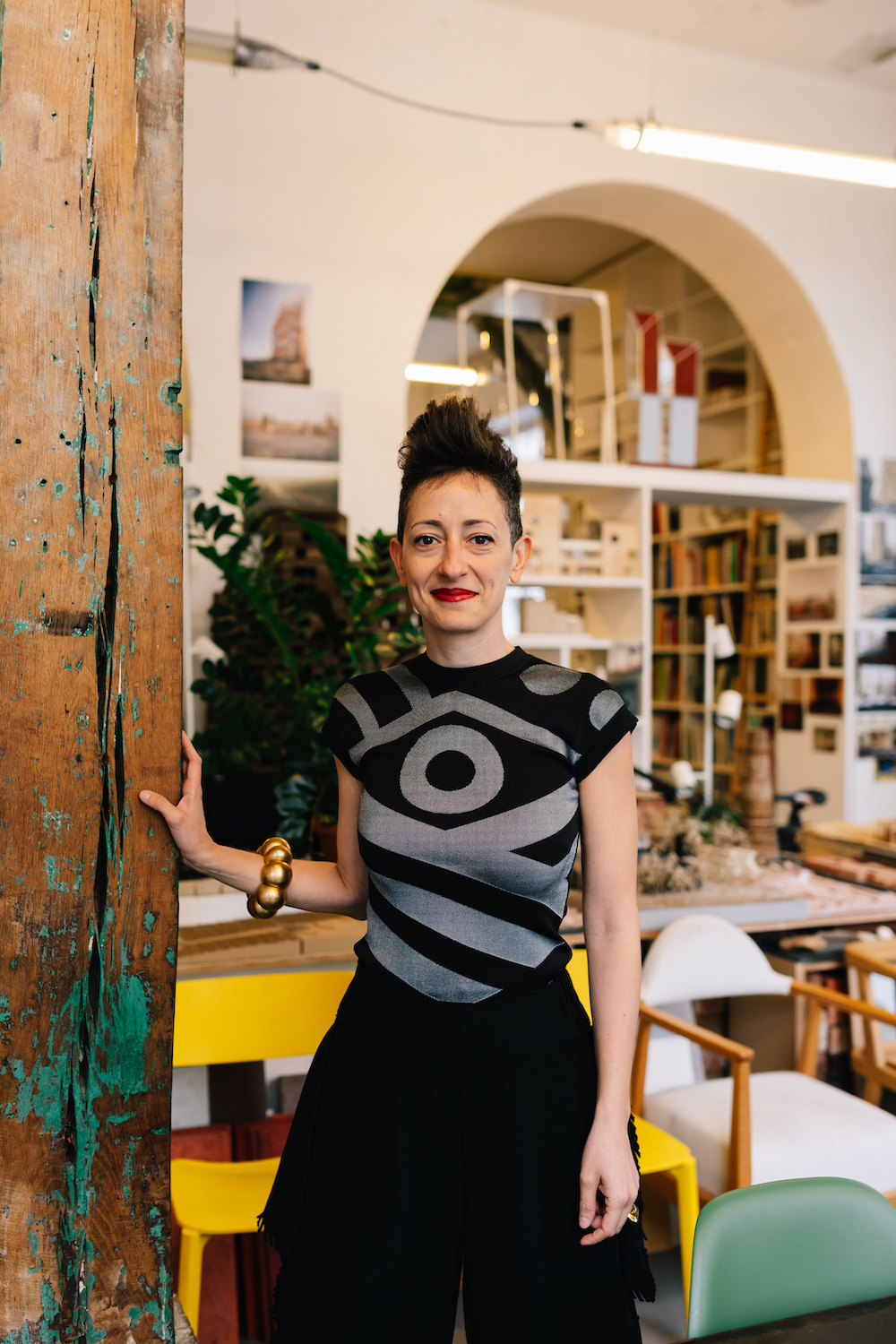
Lina Ghotmeh in her Paris studio, portrait by Karl Hab.
WHITEWALL: What initially made you want to pursue architecture? What was your early relationship to design and architecture, to spaces and environments?
LINA GHOTMEH: I was born in Beirut. Growing up in Beirut was very particular because it was after wartime and during the war, seeing the city completely eaten up by violence. At the same time, I was fascinated in the construction. I was observing the city as an open section, where you can see what it is made of. It gives you the inner look at what constitutes our environment, seeing how nature was taking over the city and bringing beauty. I used to live on the seventh floor, and I remember looking down at kids playing and seeing how architecture can bring joy and play.
I always felt this desire to make beauty, to make places that people could meet, and how architecture could act as a positive role in our society in bringing people together.
I also grew up very close to nature, going to the village where my father has origins and seeing all the vernacular modes of construction. People used to construct their houses with their own hands, block by block, working with stone. Looking at the stone mason, these are moments that were impactful, seeing this closeness to materiality. I was fascinated by archeology, also, by this relationship with architecture to history and how it could unravel a way of doing also.
And then I wanted to become a doctor [laughs].
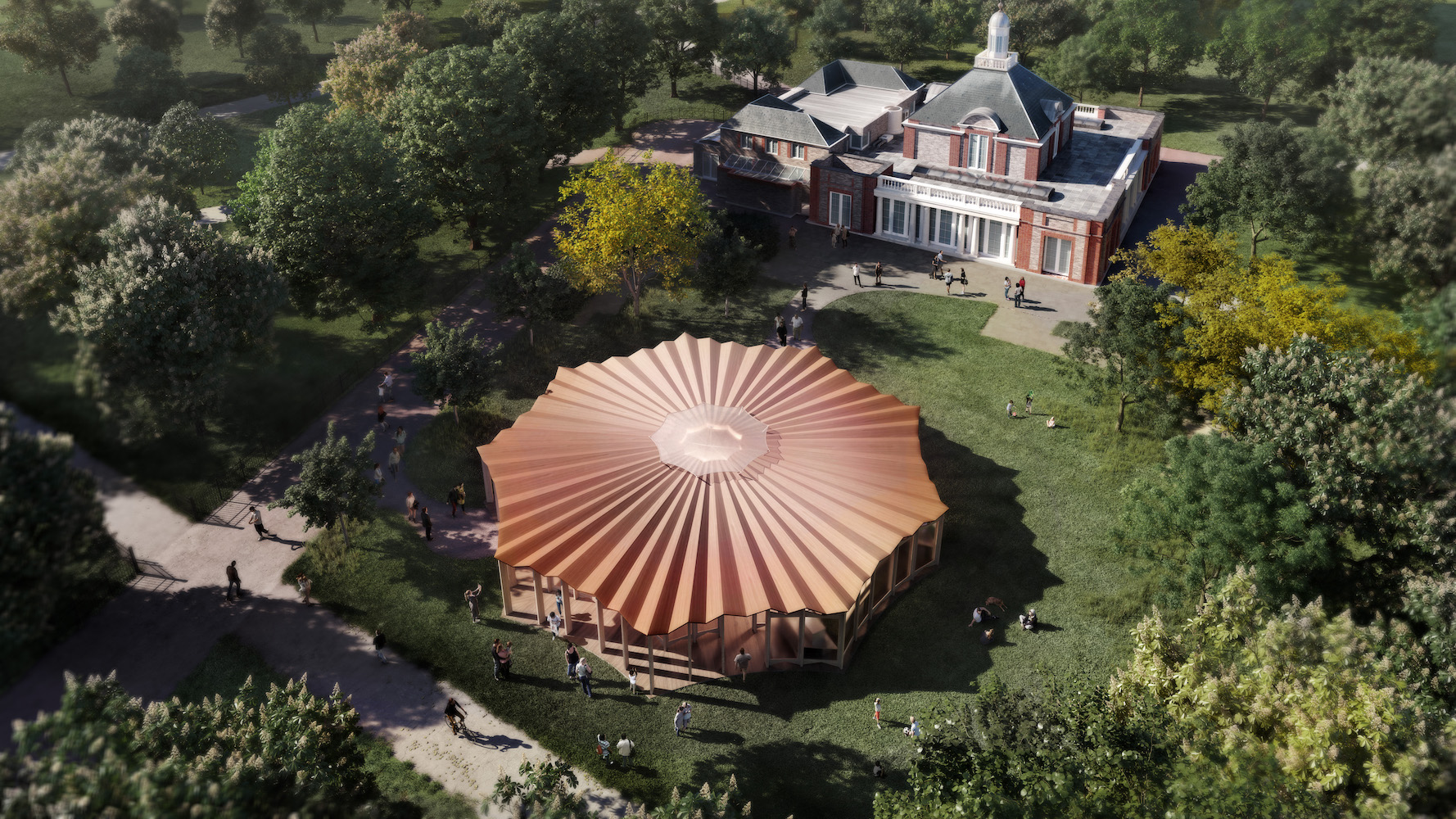
Design rendering of Serpentine Pavilion 2023 designed by Lina Ghotmeh — Architecture, photo © Lina Ghotmeh — Architecture.
WW: Oh yeah?
LG: The body was fascinating for me! Biology and genetics especially, this relationship to the DNA and genetic engineering was fascinating. But I started studying architecture and I was passionate about it. I dropped biology and continued architecture. Maybe in another life!
WW: It’s funny because I was watching a video of a lecture you gave and you spoke about how the human body is made up of more microbes than human cells, making the parallel that if so much nature is in us, how much nature is in architecture? So that reference you made is starting to make sense now!
LG: Yes! And the fact that our first habitat is our body and how much we are driven by our own flesh, our own being. That’s looking at one’s body but looking also at the environment as an extension of it and how much you want it to be sustainable and positive to live with.
WW: You also said you were interested in archaeology, and your practice you define as at this intersection of history, future, humanity, nature. How did you arrive at that framework?
LG: Architecture for me is an investigative act, similar to archaeology. You dig in and bit by bit build up the truths or the reality of what had existed. It’s only through what you find that you build up a certain story or a certain directive. All our lives are built on stories and the relationship that is told to spaces, and environments.
Architecture is a way of emerging something linked to the past that is new at the same time. This framework started building up in my school working through investigation and then suddenly it became part of my atelier and drew me more and more into projects that are very much related to context, that are sometimes difficult, that have a history, where you have to reestablish this environmental tie to a certain context.
“Architecture for me is an investigative act.” —Lina Ghotmeh
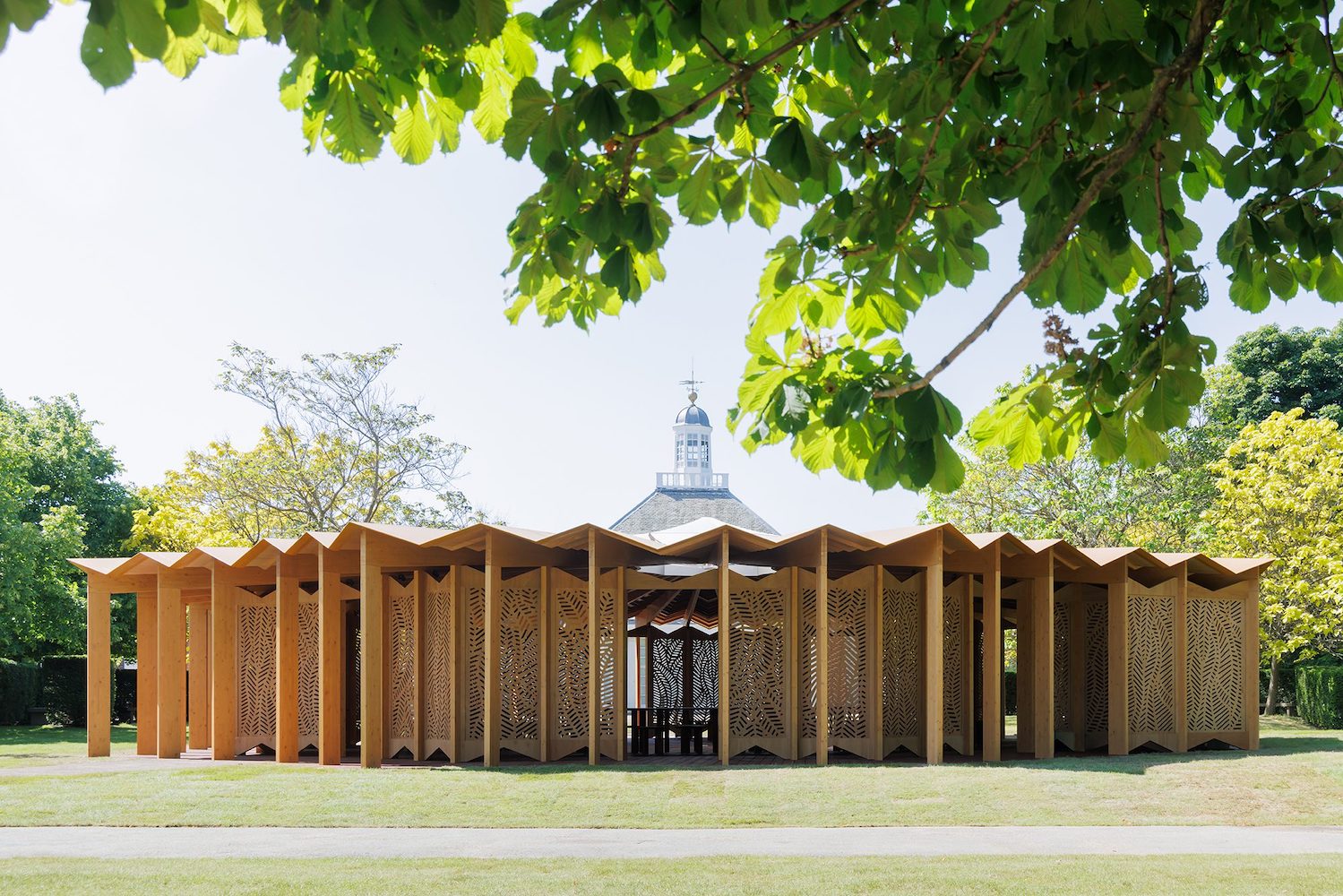
Serpentine Pavilion 2023 designed by Lina Ghotmeh. © Lina Ghotmeh — Architecture, photo by Iwan Baan, courtesy of Serpentine.
WW: How does that investigation, that research, that digging in and anchoring to place lead to creating an ethical building, a bioclimatic design that responds to local conditions and resources? Like what you’ve done with the Hermès Workshops in Normandy where a local brickyard was used and reinvigorated for building materials, and where geothermal energy and solar panels are employed?
LG: It’s about integrating complexity into architecture and allowing it to become accessible. It’s about listening to the environment. It is not theoretical research, it’s about really investigating the place, its material.
The Hermès Workshop is the first low-carbon building built in France. I was looking at the context in Normandy where the earth is very good for making bricks. We identified a local artisan brick maker. Using the local earth and material is a much lower carbon than sourcing materials from another part of the world.
Then, thinking about bioclimatic design that has little impact on its environment. If you look at the façade, it is hollowed so you enter a courtyard first, and then you get into the building. So it’s about trying to respect the local landscape and immerse the building in relation to it. There is this sense of emerging from the environment, the material environment itself. In that sense, it’s more sustainable, it’s more ecological as a construction.
And from the immaterial environment, we related to Hermès and their history, the history of saddlery and horse riding. Building spans with brick is about making arches and echoing at once the gallops of the horse. In a way it is very environmental, and is about the experience of people into the feel the narrative. Unleashing the imaginary and when they are experiencing the architecture of this building.
“It’s about trying to respect the local landscape.” —Lina Ghotmeh
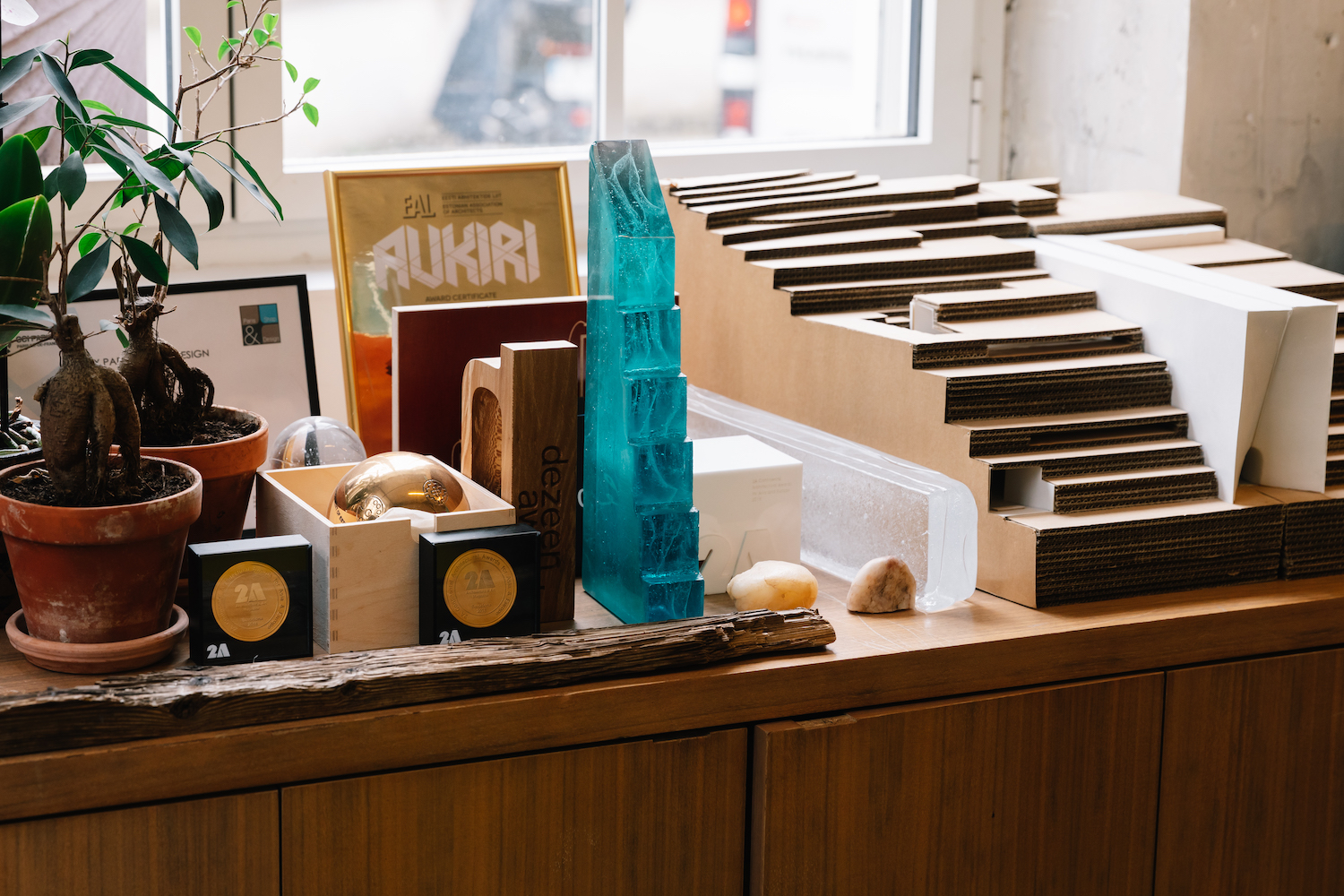
Lina Ghotmeh’s Paris studio, photo by Karl Hab.
WW: Something else that defines your practice is the idea of incorporating a handmade quality to architecture. Often when we think of architecture, we think of it on this massive scale, with materials that are machine-made.
LG: The hand and the work of material allow a connection between humans and the built environment. For example, in the project of Stone Garden in Beirut, people are touching the facade, getting close and this emotional relationship is reinstated. This kind of sense is so important because it allows us to remember that we are part of the environment and people are part of this content of material. We are material and materials are very important in our life. We don’t live in abstract volumes. Nature is full of texture, full of materiality, so it’s about echoing and continuing that relationship through construction.
There is magic in what the hand can craft. If we’re working with glassmakers, maybe advocating imperfections—glass that is not completely transparent and has this texture and bubbles. Things don’t have to be slick. Imperfection is part of materiality. It’s about working with it to allow beauty and precision.
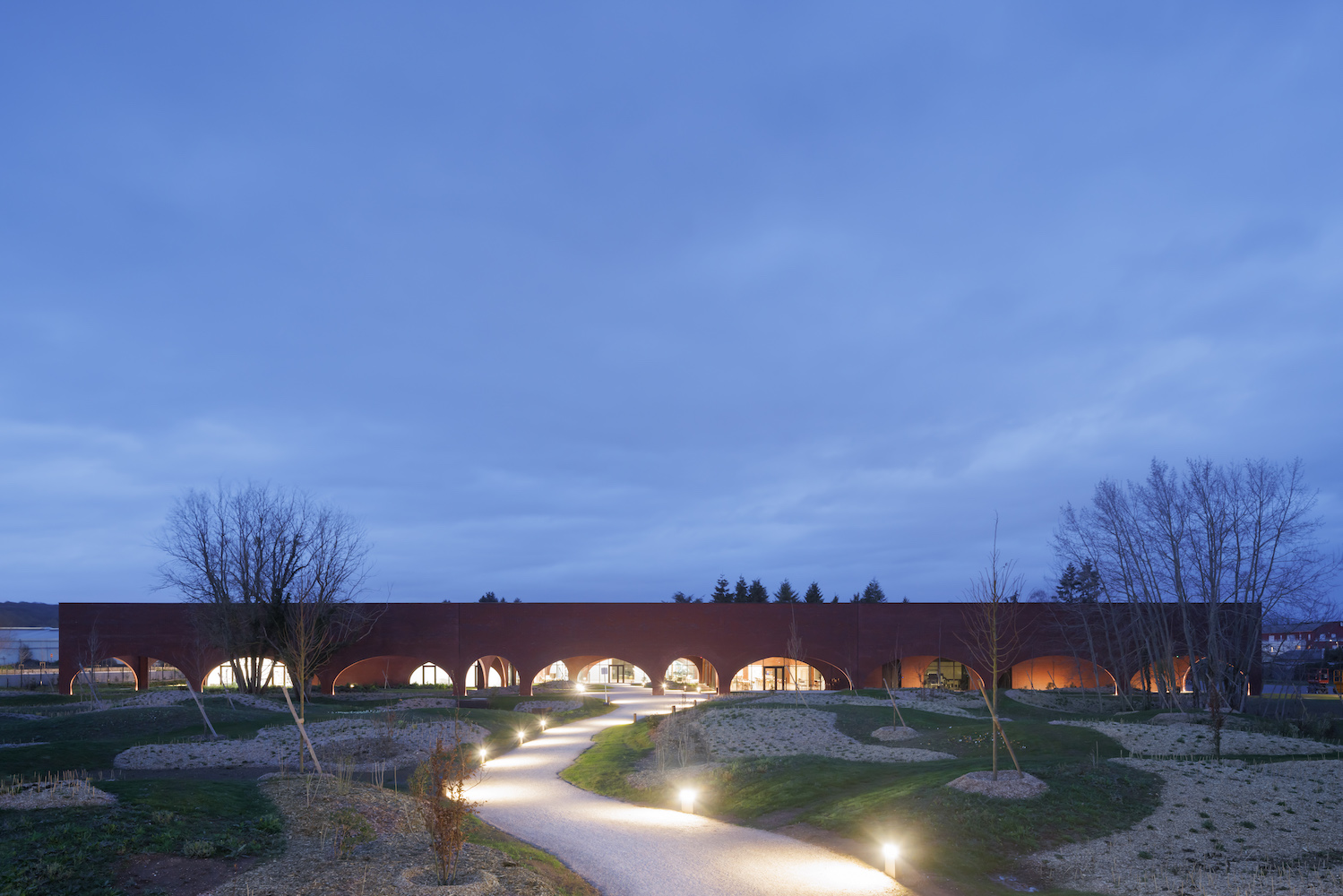
“Precises Acts“ Atelier Hermès (2019-2023) in Normandy France, design by Lina Ghotmeh — Architecture, photo by Iwan Baan, © Hermès, 2023.
WW: And those slight imperfections, that un-slickness, really does make our body feel different in a space.
LG: And we sometimes forget how much we are influenced by the spaces we are in. They awaken our senses and drive our acts.
WW: With projects like the residential Stone Garden in Beirut, in particular with its window gardens, you’ve talked about this idea of architecture as a space for healing. How did you arrive at that idea of architecture’s potential to be a site of care?
LG: I think it’s nice how you say it, that it’s about caring—how you care and allow architecture to be caring to its environment. The Stone Garden project is trying to listen to the city of Beirut which has been war-torn. It talks also about personal experience which of course is an experience that is also a collective one. I’m not the only one who has lived through this period of time of war or have seen the city center completely destroyed but refurbished so quickly.
The wound in the city needs time to heal and you need some time to see and to really appropriate it and to pronounce it differently. Stone Garden and its architecture try to look at the city and at the different languages of the city.
Like allowing the window to become a place of life but also the memory of what had existed before and opening our field of imagination. The window is a garden and a way of framing the city differently. It’s about creating a comfortable experience within the living environment. Letting in curiosity, being porous to the context, and trying to instill it in the building a care about what’s happening around it.
Some people look at it like it has existed for hundreds of years, others wonder about the facade, and others feel proud that it has elevated the city of Beirut. It’s not neutral. It instigates reactions.
Personally, this building is a healing process.
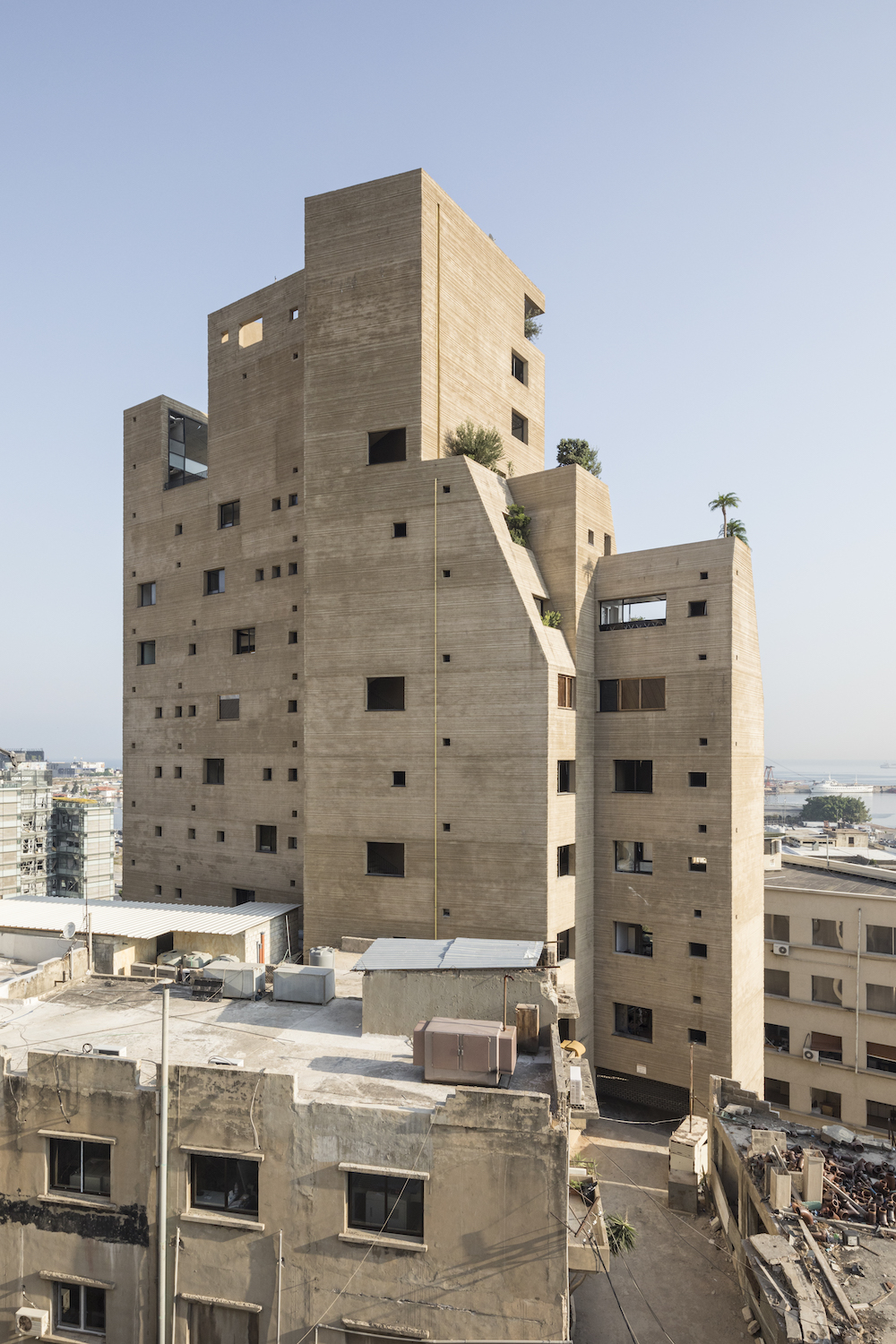
“Stone Garden,“ Beirut, Lebanon, Housing and Mina Art Foundation Lina Ghotmeh — Architecture, photo ©Laurian Ghinitoiu
WW: How can architecture encourage and reflect openness and inclusivity –like in the project “Urban Dance”–National Choreographic Center of Tours. I loved your description of it as not a space for the initiated. That it is art for anyone.
LG: The first approach is always thinking about architecture as a device, rather than as an object. It’s a tool to expand, to be beyond its own self. Tours is a good example of that where the entrance becomes this large opening that allows the dancers to go out from the heart of the building and spill over the city and vice versa with people coming in.
By relating spaces in a different way, by creating porosities more interactions can happen. In Beirut this is related to the ground floor, the gallery space, an open space that is multipurpose for exhibitions or talks, and special configurations that connect to the city.
And the warmth of architecture is important. Feeling that you are at comfort at ease that it’s not alien, that you are there to actually engage and to feel at ease and to feel good.
WW: And do you see bringing nature into these spaces as a way to warm them up?
LG: Nature is always part of architecture for me. In the Ateliers Hermès, courtyards orchestrate the entrance and nature can really grow around the architecture.
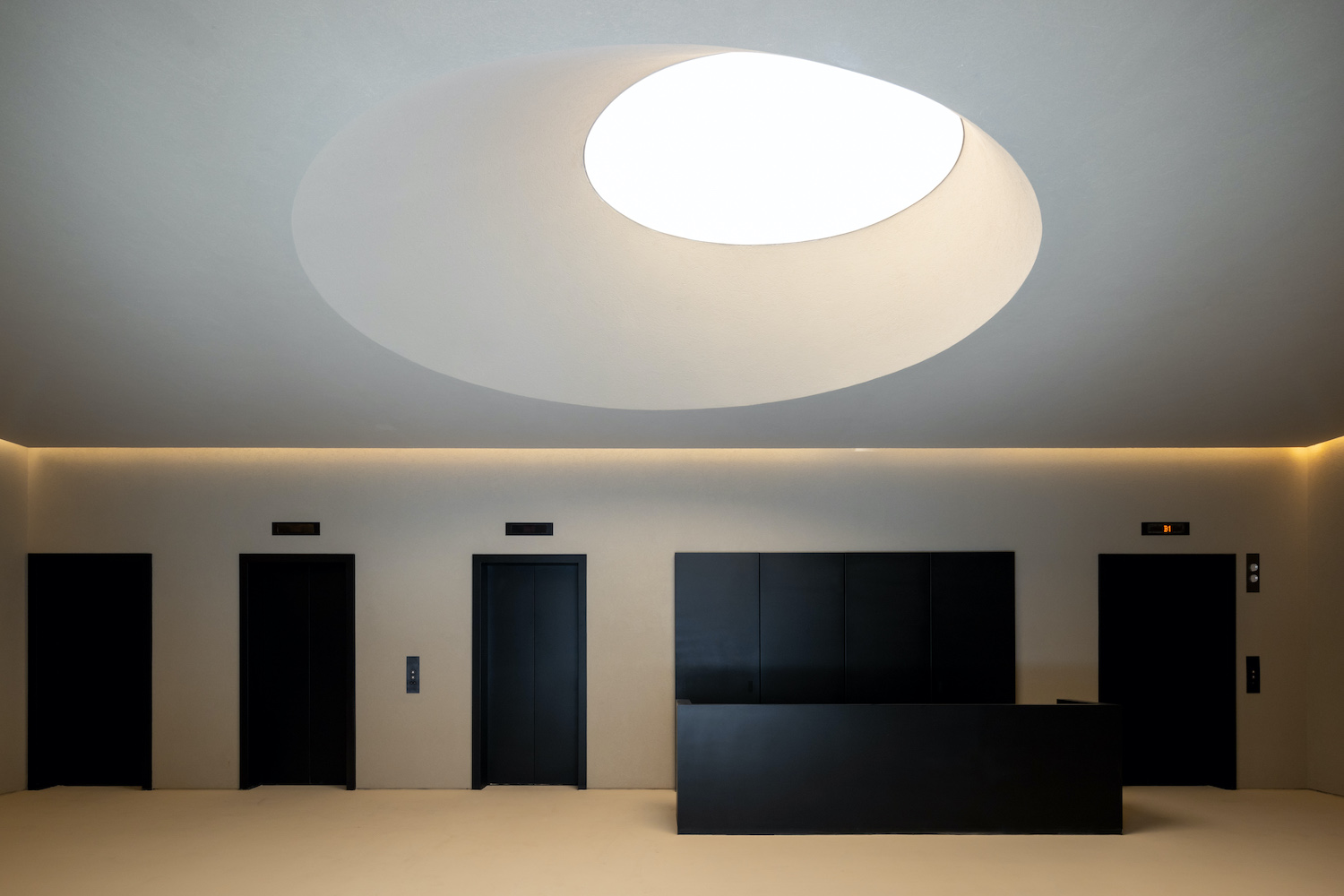
“Stone Garden,“ Beirut, Lebanon, Housing and Mina Art Foundation Lina Ghotmeh — Architecture, photo © Iwan Baan.




